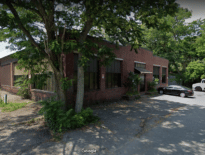A deep dive into the affordable housing sector in Greater Boston has found suburban towns and cities are not only producing very little affordable housing, they are erecting barriers that keep families of color out.
“Access to subsidized housing is deeply unequal,” Boston University professor Katherine Einstein told a crowd at The Boston Foundation’s headquarters Wednesday morning.
Einstein and fellow BU professor Max Palmer included their findings in an extensive supplement to the foundation’s annual Greater Boston Housing Report Card, released Wednesday.
Wealthier suburbs like Belmont and Winchester have both far fewer subsidized housing units as a share of their overall housing inventory, and a much smaller share of their rental units are paid for with housing vouchers, Einstein and Palmer wrote.
“Newton isn’t that much smaller than Cambridge, but it’s producing far less,” Einstein said, noting that Cambridge has around 6,301 subsidized housing units, or 12 percent of its housing stock, compared to Newton’s 1,377, or 4 percent of its housing stock.
Compounding this problem, Einstein said, was a broken application system that has no centralized repository of available affordable units, making it extremely difficult for someone looking for affordable housing to find an available unit and then forces them to fill out applications as long as 24 pages for each unit they’re seeking.
In addition, with little to no oversight of how housing units are marketed, some housing developers and their consultants were found to be “copying and pasting” parts of plans for marketing affordable units from project to project over several years. The result, Einstein said, was developers sending out information about available units to email addresses that no longer worked, or even to nonprofits that weren’t equipped to share the information with people in need of subsidized units.
In a Kingston development Einstein and Palmer investigated, units were advertised to Boston officials, and to officials in North Shore suburbs, but not to officials in Brockton – the closest concentration of poor and working-class residents to both projects.
Some of these efforts are being addressed by a relatively new affordable rental listings platform called Housing Navigator, researchers and panelists at the report’s release event said, but big gaps in both resources and access to information about listings remain.
“Every development that’s processing applications is probably spending over $100,000 to do that,” said panelist Leslie Reid, the executive director at Madison Park Development Corp. “What if we spend that on strengthening Housing Navigator? … The resources are there. We need to be more intentional about directing them.”
Even as the housing crisis rolls on, with rents significantly above what many Greater Boston residents can afford – almost 1 in 4 of the region’s renters spend more than 50 percent of their income on rent, with minority renters bearing the worst burden – Einstein and Palmer discovered that “many” lotteries for subsidized units in suburbs don’t fill. This, they say, is thanks to unit sizes, age restrictions and local-preference rules that officials in mostly-white, suburban communities demand from developers or that developers voluntarily adopt to win local support.
“A lot of communities like Winthrop and Winchester are basically producing no family-sized subsidized housing units,” Einstein said. “Many communities appear to be using age restrictions to prevent families with children from moving in.”
Because people of color make up a larger share of those in need of affordable housing, this means the burden falls heaviest on them, she said.
State Sen. Lydia Edwards, another panelist at The Boston Foundation’s report release event Wednesday, cautioned that local preference was an important tool to help moderate the gentrification-driven displacement of minority communities, and to winning support from officials in communities like Winthrop, which she represents along with Revere and parts of Boston and Cambridge.
“It’s the only way Winthrop – a town I represent – Revere – a town I represent – accept affordable housing. So they can see their kids in that building. The best thing we can do [at the state level] is create a guideline for local options,” she said, likening such a move to a “paint-by-numbers” approach.
Fellow panelist and Housing Navigator Executive Director Jennifer Gilbert warned that giving local officials too many options would not solve the problem poor and working-class Bay Staters face in trying to find affordable units.
“That winds up being a 24-page application,” she said. “On Housing Navigator, we have eight different income tiers. They’re all affordable. Imagine being the person on the ground sorting through applications. People don’t live in checkboxes.”







